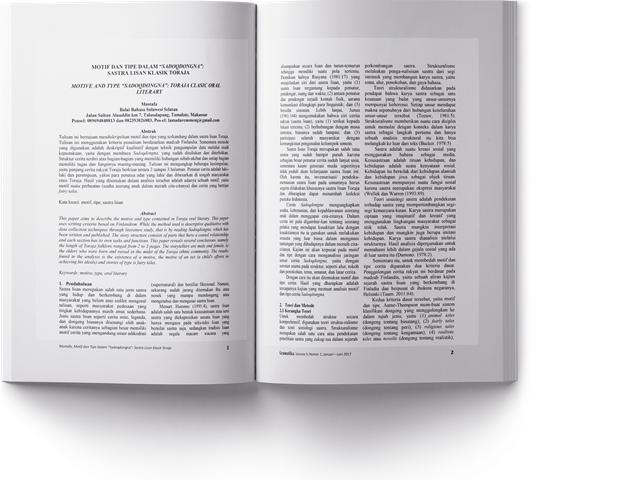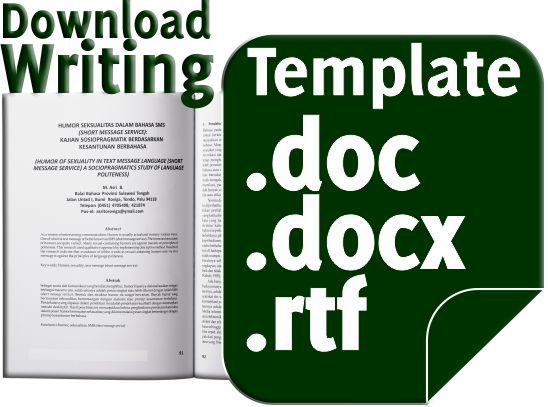Motive and Type “Sadoqdongna”:
Toraja Clasic Oral Literary
Abstract
This paper aims to describe the motive and type contained in Toraja oral literary. This paper uses writing criteria based on Finlandism. While the method used is descriptive qualitative with data collection techniques through literature study, that is by reading Sadoqdongna, which has been written and published. The story structure consists of parts that have a causal relationship and each section has its own tasks and functions. This paper reveals several conclusions, namely the length of Toraja folklore ranged from 2 to 3 pages. The storytellers are male and female, ie the elders who were born and raised in the midst of the Toraja ethnic community. The results found in the analysis is the existence of a motive, the motive of an act (a child's efforts in achieving his ideals) and stories of type is fairy tales.
References
Damono, Sapardi Djoko. 1978. Sosiologi Sastra Sebuah: Pengantar Ringkas. Jakarta: Pusat Pembinaan dan Pengembangan Bahasa.
Hutomo, Saripan Sadi. 1991. Mutiara Yang Terlupakan: Pengantar Studi Lisan. Jatim: Hiski.
Sikki, Muhammad, et al. 1986. Struktur Sastra Lisan Toraja (Transkript dan Terjemahan). Jakarta: Pusat Pembinaan dan Pengembangan Bahasa.
Rusyana, Yus. 1981. Cerita Rakyat Nusantara Kumpulan Makalah tentang Cerita Rakyat. Bandung: Fakultas Keguruan Sastra dan Seni IKIP Bandung.
Taum, Yoseph Yapi. 2011. Studi Sastra Lisan: Sejarah, Teori, Metode, dan Pendekatan Disertai Contoh Penerapannya. Yogyakarta: Lamalera.
Teeuw, A. 1978. Penelitian Struktural Sastra. Bogor: Pusat Pembinaan dan Pengembangan Bahasa.
Junus, Umar. 1981. Mitos dan Komunikasi. Jakarta: Sinar Harapan.
Wellek, Rene dan Austin Warren. 1993. Teori Kesusastraan. Jakarta: Gramedia.
Wikipedia. Suku Toraja. id.wikipedia. org/wiki/Suku_Toraja. Diakses 22 Juni 2015.

Copyright (c) 2017 Mustafa Mustafa

This work is licensed under a Creative Commons Attribution-NonCommercial-ShareAlike 4.0 International License.


